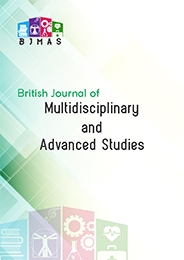Exploring QSARs of some Translocator protein (TSPO) ligands using MLR and PC-ANN techniques
DOI:
https://doi.org/10.37745/bjmas.2022.04903Abstract
Quantitative structure–activity relationship study using principal component artificial neural network (PC-ANN) methodology was conducted to predict the inhibitory activities expressed as pIC50 of 136 Translocator protein (TSPO) ligands. The results obtained by MLR was number of models, the best model was model number 24 which includes 24 descriptors, and resulted with R= 0.909, R2=.826, and R2adj.= 0.788. PCA performed to divide the data into three data sets, then the ANN performed on the chosen models (19-24) from LOO and LMO validation. The results show that model 24 has the highest correlation coefficient for the test set (0.85016) indicating its high predictive power which chosen to continue ANN to find the optimal number of hidden nodes, and in this case model 24 with 7 hidden nodes were chosen as the best model with the optimal hidden nodes. ANN resulted model were validated through randomization test, then the conditions proposed by Golbraikh and Tropsha were applied to conclude that the QSAR models have acceptable prediction power or not. However, the best ANN model with a good predictive power was model number 24.
Downloads
Downloads
Published
Versions
- 19-05-2025 (2)
- 19-05-2025 (1)












